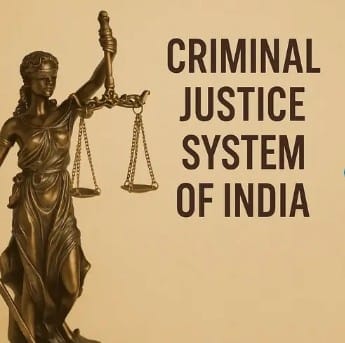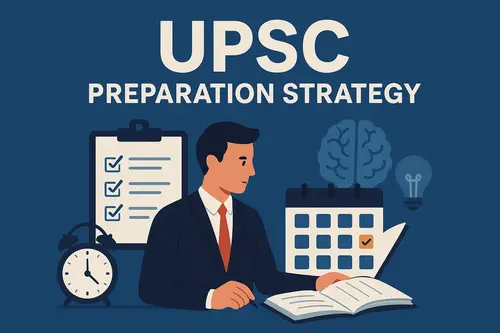
“It is the power of punishment alone, when exercised impartially in proportion to the guilt, and irrespective of whether the person punished is the King’s son or an enemy, that protects this world and the next.”
– Kautilya
Criminal justice system in India
The Criminal Justice System (CJS) encompasses the government agencies that have the power of enforcing law, adjudicating a crime, and correcting behavior of criminals.
Some observers may believe that the CJS is an old concept, but in fact, the origins of the idea of a justice system can be traced back to the 4th century BCE, when Vishnugupta Chanakya Kautilya wrote the Arthashastra (science of wealth). In part of this text, the Dandaniti (science of law enforcement), Kautilya laid out a rational and comprehensive system of governmental justice that is still advantageous and necessary in the present day.
Today, the Indian public relies on the CJS for their full right to free and fair justice, as guaranteed by the Indian Constitution. The establishment of the CJS has existed for some time now, and it is understandably physiologically and technologically inefficient. Delay, corruption, and inefficiency have burdened the CJS over time
According to Economic Survey 2018-19, there are almost 3.5 crore (35 million) pending cases, predominately intermittent civil action between litigants in district and subordinate courts. It has led to the reality of the true and overused maxim that “Justice delayed is Justice denied.”
Committees and Commissions on Criminal Justice Reform
1. Justice V.S. Malimath Committee -2000
Justice V.S. Malimath is a retired judge for the Supreme Court of India, and Vice-Chairman – National Police Commission from 1977- 1981. The government set up the Malimath Committee to reform India’s century-old Criminal Justice System; it recommended 158 changes, most still unimplemented.
The Committee opined that the system had provided favourably to all accused, and not to the victims. The Malimath Committee noted the failings of the CJS:
1. Failure of cases to be disposed of (cases outstanding)
2. Undertrial Prisoner backlog,
3. Police inefficiencies and the inefficiencies in the investigation of crimes.
Key Recommendations
(a) Rights of the Accused– Article 22 of the Constitution protects the accused rights. The Committee recommended publishing the Schedule to the Code in local languages to raise awareness of rights.
Case in point:
In Ajmal Kasab v. State of Maharashtra (2013), The Supreme Court held that magistrates must inform accused of their right to free legal aid.
(b) Shortage of Courts and Judges
India has one of the lowest judge-population ratios in the world (10.5 per million in 2017, vs. 50 per million globally)
The Committee recommended raising the number of judges and courts
67.2 of inmates in prisons are under-trials could be due systemic unreasonably long times .
(c) Presumption of Innocence
Indian courts apply ‘proof beyond reasonable doubt’; the Committee considered this too harsh on prosecution and suggested a lower threshold, letting courts accept facts if convinced of their truth.
Example: In State of Rajasthan v. Mohan Lal (2009), SC reinforces that every accused person is pre supposed to have innocent until it be proven otherwise.
(d) Right to Silence
Article 20(3) provides for your right not to incriminate yourself. However the Committee proposes to permit the court to question the accused, and to draw adverse inferences from any refusal to answer.
In Raj Kumar Singh v. State of Rajasthan– The SC ruled that courts may infer guilt only when incriminating evidence is proven and left unexplained.
(e) Dying Declaration
The Committee supported admissibility of dying declarations and recorded statements of eyewitnesses.
Example : In Ulka Ram v. State of Rajasthan the SC held that dying declaration statements are admissible as evidence as it related to cause of death.
Also Read – https://infotrigg.com/article-14-of-indian-constitution-right-to-equality/
National Police Commission (NPC, 1977-82)
The police, as the main law enforcer, faces issues of politicisation, custodial violence, and weak accountability.
The NPC was established to examine the role , structure, and accountability of the police. Its 8th report (1982) recommended that a modern Police Act replace the previous Police Act of 1861 (which was colonial).
Key Recommendations
- Establish State Security Commissions to ensure the police are not politicised.
Example: The SC, in Prakash Singh v. Union of India (2006) ordered the board be created to monitor police and transfers/postings (50: 164). - Replace Police Act, 1861 with a modern regime which uphold the rule of law and impartiality of policing.
- Judicial Inquiry in all cases of custodial rape, custodial death, and setting Up Dedicated Investigating Cells for Atrocities Against Scheduled Castes/Tribes.
In the Hathras gang rape case (2020), police authorities obstructed the filing of the FIR—the first step in revealing injustice—and failed to deliver the justice they were legally bound to provide. - The Government of India set up a Central Police Committee (CPC) to recommend funding, grants, and modernization measures for state and federal police forces.
Also Read – https://infotrigg.com/article-14-of-indian-constitution-right-to-equality/
Ongoing Problems in the Criminal Justice System
- Overwhelming accumulated cases lodged in courts.
- Overflow of prisons with undertrials.
- Inadequate judge-to-population ratio.
- Police-politics nexus and excesses while in police custody.
- Absence of effective victim justice.
Conclusion
The efficiency, transparency, and accountability of India’s criminal justice system, together with the adherence to the rule of law natural justice requires that the criminal justice system works effectively.
The Malimath Committee and National Police Commission (NPC) reports believe that serious reforms are necessary to the criminal justice system, which includes a review and re-enacting of the Indian Penal Code, Code of Criminal Procedure, and other Evidence Act. While these laws provide safety measures against abuse, there are also many areas of ambiguity. Without implementing this reform and simultaneous reform of police, prosecution, judiciary, and prisons, they will remain ineffective.
The emphasis of the system must ultimately shift to a reformative model of justice, where the expectation is some level of restoration of faith in the system, while facilitating peace and order in society.
- References
- Laxmikanth, Indian polity , 2017,Chennai, McGraw Hill education(India) private limited.
- South Asia Human Rights Documentation Centre, Handbook of Human Rights and Criminal Justice, Oxford University Press, 2010
- https://shodhganga.inflibnet.ac.in/bitstream/10603/64472/23/23_annexure%20v.pdf
- https://www.thehindu.com/news/national/the-malimath-committees-recommendations-on-reforms-in-the-criminal-justice-system-in-20-points/article22457589.ece/amp/


Informative